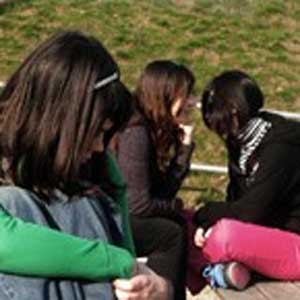"We looked at data from the National Longitudinal Transition Study two (NLTS2), a group of over 11,000 adolescents enrolled in special education," he says.
"Out of this group, teens with an ASD were significantly more likely never to see friends out of school (43.3 percent), never to get called by friends (54.4 percent), and never to be invited to social activities (50.4 percent) when compared with adolescents from all the other groups."
The NLTS2 includes groups of adolescents with ASDs, learning disabilities, intellectual disabilities and speech and language impairments.
Shattuck says that these findings show that the majority of adolescents with an ASD experience major obstacles to social participation.
"It appears that experiences with peers are more likely to occur one-on-one, and perhaps at home rather than in the community," he says.
Shattuck notes that limited or absent peer relationships can negatively influence health and mental health, especially during the teen years.
"One mechanism for promoting social relationships is by fostering participation with peers in group activities such as clubs, scouting, or sports," Shattuck says.
"Only one-third of adolescents with an ASD are accessing such opportunities, and there is an obvious need for greater supports and services to promote community inclusion for this population," he says.
The study found that conversational impairment and low social communication skills were associated with a lower likelihood of social participation.
"Having impaired conversational ability was associated with an elevated risk for friends never calling, never being invited to activities, and having no involvement in extracurricular activities," Shattuck says.
Adolescents from families with lower income had an elevated risk for no involvement in activities, but not an elevated risk for limited contact with friends.
Age, sex, race, ethnicity, and school context factors were not significantly related to social participation.
The study, "Participation in Social Activities among Adolescents with an Autism Spectrum Disorder," is published in PLoS ONE, the journal of the Public Library of Science.

















Related Items
Balanced population growth accelerated national development
Mobile clinics boost health outcomes, cut costs in developing countries
Social media for eight-year-olds? ‘Yes’, says digital entrepreneur…